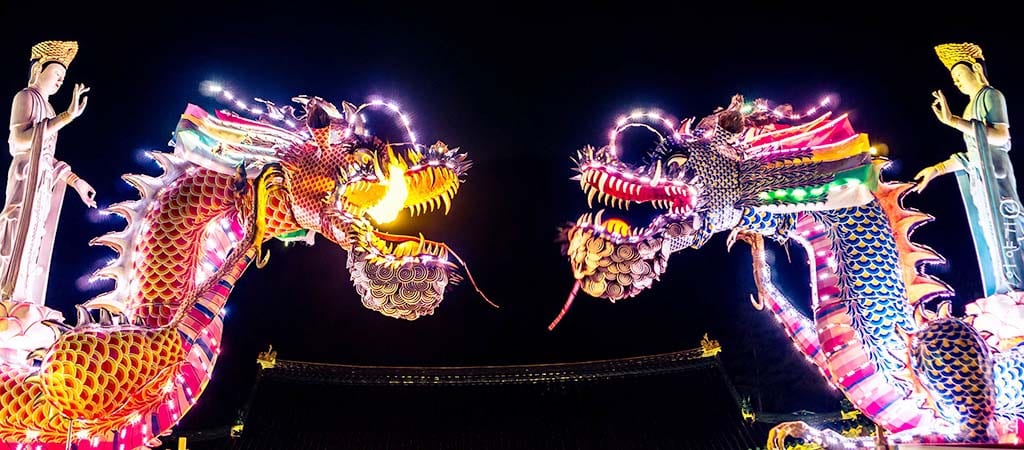Dec 31, 2024
China is extending its cultural influence globally, wherein the essence of Chinese culture goes beyond museum exhibitions or traditional customs displays. It is embodied through its engagements with diverse cultures.
In an era where the world is becoming increasingly interconnected, China stands as a cultural behemoth, keen on showcasing its rich heritage and contemporary prowess to the global stage. With a history spanning thousands of years, China’s cultural tapestry is woven with threads of tradition and modernity, creating a captivating narrative that resonates with audiences worldwide. In recent years, the nation has embarked on a mission to share its diverse cultural heritage, fostering a deep appreciation for its ancient roots and its dynamic present.
A Glimpse into the Past: China’s Ancient Cultural Legacy
China’s cultural journey is a mesmerising expedition through time, echoing with the footsteps of emperors, scholars, and artisans. The Great Wall, an architectural marvel, whispers tales of resilience and strategic prowess. The Forbidden City, with its intricate palaces and courtyards, unveils the secrets of imperial life. Through meticulous preservation efforts, these landmarks serve as portals to an era where dynasties ruled and the Silk Road connected civilisations.
China, with its vast landscapes and diverse ethnicities, boasts a kaleidoscope of traditions. From the colourful festivals of the Yi people to the elegant tea ceremonies of the Han, each cultural facet contributes to the nation’s vibrant identity. As China opens its doors to the world, these ancient legacies become not just historical artefacts but living expressions of a people deeply connected to their roots.
A Symphony of Tradition and Modernity: Urbanisation and Cultural Renaissance
Amid rapid urbanisation, China seamlessly blends tradition with modernity. Cities like Beijing and Shanghai stand as living testaments to the nation’s ability to evolve while preserving its cultural essence. The juxtaposition of ancient temples against towering skyscrapers paints a picture of a society that embraces progress without forsaking its past.
The Belt and Road Initiative, a monumental global infrastructure project, serves as a modern Silk Road, fostering cultural exchange along its routes. This initiative not only enhances economic connectivity but also acts as a bridge for the exchange of ideas, art, and traditions. As China showcases its culture to the world, it is not merely exporting goods but inviting the global community to partake in a cultural dialogue that transcends borders.
Culinary Delights: A Gastronomic Journey through China
No exploration of Chinese culture is complete without indulging in its diverse culinary landscape. Chinese cuisine, renowned for its flavours and techniques, has become a global phenomenon. From the fiery spices of Sichuan cuisine to the delicate dim sum of Cantonese fare, each region contributes a unique flavour to the grand banquet of Chinese culinary arts.
In recent years, Chinese restaurants have mushroomed in major cities worldwide, allowing people to savour the authenticity of Chinese dishes. The art of Chinese cooking is not just about taste; it’s a manifestation of cultural identity. As chopsticks click and flavours dance on the palate, China showcases its culinary heritage, inviting people from around the world to embark on a gastronomic journey.
Innovation and Creativity: China’s Contemporary Cultural Expression
China’s cultural renaissance extends beyond the traditional. With a burgeoning film industry, art scene, and technological advancements, the nation is making significant strides in contemporary cultural expression. Chinese cinema, marked by films like “Crouching Tiger, Hidden Dragon” and “Raise the Red Lantern,” has captivated global audiences, offering a window into the complexities of Chinese society.
The art world is witnessing a surge in interest in Chinese contemporary art, with artists like Ai Weiwei challenging conventions and pushing boundaries. Moreover, China’s tech giants are at the forefront of innovation, contributing not just to the global technological landscape but also shaping the way people interact with culture. From virtual reality experiences to cutting-edge digital art, China is showcasing a modern, technologically infused cultural narrative.
The Role of Soft Power: Understanding China’s Cultural Diplomacy
China’s cultural outreach is not a mere happenstance; it is a strategic deployment of soft power. The term “soft power” coined by Joseph Nye refers to a nation’s ability to influence others through attraction and persuasion rather than coercion. China recognises the potency of cultural diplomacy in shaping international perceptions and building bridges of understanding.
Confucius Institutes, spread across the globe, serve as cultural ambassadors, offering language courses and cultural programs. These institutes act as conduits for people-to-people exchanges, fostering mutual understanding and appreciation. By showcasing its language, art, and philosophy, China is not just sharing its culture but also actively participating in shaping the global cultural narrative.
Global Events: China on the World Stage
Hosting international events provides China with an unparalleled platform to showcase its culture to the world. The Beijing Olympics in 2008 was a landmark moment, where the opening ceremony was a breathtaking display of Chinese history and artistry. The upcoming Winter Olympics in 2022 promises to be another grand stage for China to exhibit its cultural prowess.
Expo 2010 in Shanghai was a microcosm of China’s commitment to cultural exchange. Millions of visitors experienced the richness of Chinese heritage through pavilions that celebrated the nation’s past, present, and future. These global events not only attract attention but also create lasting impressions, shaping perceptions of China on a grand scale.
Public Engagement: Social Media and Cultural Narratives
In the digital age, social media acts as a powerful tool for shaping cultural narratives. China, recognising this, has actively engaged in digital diplomacy. Platforms like TikTok, WeChat, and Weibo have become cultural battlegrounds, where narratives are shaped and perceptions are moulded.
Through viral videos, captivating stories, and cultural challenges, China showcases its modern, dynamic side. The youth-driven content on these platforms provides a glimpse into the everyday lives of Chinese people, breaking stereotypes and fostering a sense of relatability. The use of social media as a cultural amplifier is a strategic move, allowing China to directly connect with global audiences.
Challenges and Opportunities: Navigating Cultural Exchange
While China’s cultural outreach has been largely successful, it is not without challenges. Misunderstandings, cultural stereotypes, and geopolitical tensions can hinder the smooth exchange of ideas and traditions. Navigating these challenges requires a delicate balance between assertiveness and understanding.
Moreover, as China showcases its culture to the world, it must also be receptive to the diverse influences it absorbs. Cultural exchange is a two-way street, and the global community’s engagement with Chinese culture should be reciprocal. This reciprocity ensures a richer, more nuanced cultural tapestry where ideas flow freely, fostering a truly interconnected world.
Looking Ahead: A Shared Cultural Future
As China continues to showcase its culture to the world, it is not merely asserting its presence on the global stage but actively participating in shaping a shared cultural future. The threads of tradition and modernity are interwoven into a tapestry that transcends geographical boundaries, inviting people from every corner of the world to appreciate, understand, and contribute to the rich cultural mosaic that is China.
In this era of connectivity, where the world is a global village, China’s cultural diplomacy serves as a bridge, connecting hearts and minds. Through its ancient wonders, culinary delights, contemporary expressions, and soft power initiatives, China beckons the world to join in a cultural dance—a celebration of diversity, a recognition of shared humanity, and an acknowledgment that, in the grand tapestry of cultures, each thread has a story worth sharing.
China showcases its culture to the world not as a monologue but as a vibrant dialogue, inviting everyone to become a part of the narrative. This narrative is rich, dynamic, and ever-evolving. As the world embraces the allure of China’s cultural heritage, it becomes a testament to the power of culture to unite, inspire, and create a global community that cherishes the beauty of diversity.











